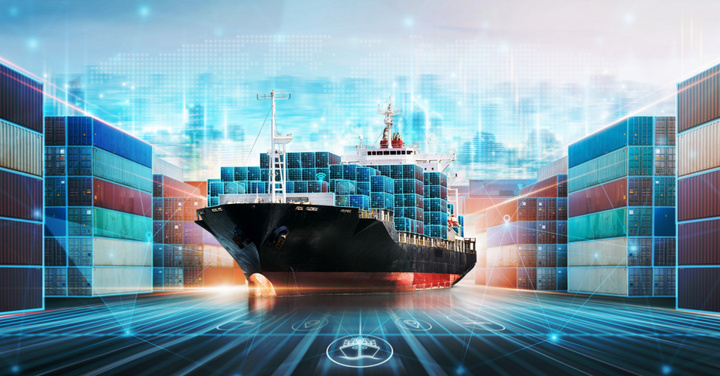A shipment's journey is usually far from over once it reaches its destination port. For shipments that continue their journey intermodally via rail, shippers and freight forwarders need access to the data on this next leg of transportation, as it can bring more streamlined operations and optimized performance. To achieve this level of visibility throughout the entire supply chain, shippers and freight forwarders require a robust solution that can provide them with real-time updates and insights at every stage of the shipment's route.
A Dynamic Industry Demands Dynamic Visibility
When placing an order on a food-delivery app, most customers today expect high visibility. They want to know when the food is being made, where the delivery driver is on their route, and when the order should arrive. There is a big difference in scale between a $20 food order and the transportation of freight, which costs thousands of dollars, not to mention the value of the goods being shipped. And yet it can take more work to get detailed, end-to-end visibility on shipments.
The complexity of intermodal shipping is one reason why meeting this visibility expectation can be challenging. One of the main obstacles is the involvement of multiple stakeholders. Containers undergo numerous handoffs, passing through carriers, terminals, and customs authorities. Each handoff introduces the potential for delays, miscommunication, or data discrepancies, making it difficult to accurately track the movement of containers. Achieving seamless connectivity and efficient data sharing among different systems and parties involved in the supply chain can be an uphill task. Incompatibilities in data formats, communication protocols, or technological infrastructure can hinder the timely and accurate exchange of container tracking information. However, some solutions, like VIZION API, address these challenges and provide intermodal visibility, which more shippers recognize as essential in pursuing enhanced visibility in a dynamic industry.
What is Intermodal Container Tracking?
Intermodal container tracking is the process of monitoring and tracing containers as they navigate through different modes of transportation. This tracking journey begins at a port terminal, where the container is loaded onto a vessel and transported across the ocean. Upon arrival, a drayage carrier takes over, moving the container to a rail ramp for the next mode and leg of the journey.
Intermodal container tracking relies heavily on technology and data sharing to provide real-time information on the container's location and status. Each time an important event happens, like arrival or departure, the tracking system captures this and provides updates.
For more efficient tracking, intermodal container tracking systems often integrate with transportation management systems (TMS) and different types of supply chain platforms. Users can closely monitor transit times, be notified immediately of delays or disruptions, and improve the overall efficiency of their supply chain operations.
3 Benefits to Leveraging Intermodal Container Tracking
There are several benefits to intermodal container tracking, which offer opportunities for shippers and freight forwarders to improve their operations and business.
1. Improved Supply Chain Visibility
Container tracking that extends past the port significantly improves supply chain visibility and proactive decision-making. Real-time updates on container location, status, and estimated arrival times enable a comprehensive view of the shipment’s progress. This visibility allows for better planning, coordination, and identifying and mitigating potential problems, which might involve rerouting shipments or adjusting schedules. Armed with accurate and timely tracking data, supply chain professionals can better make informed decisions.
2. Enhanced Operational Efficiency
Shippers can use intermodal container tracking to reduce delays and disruptions in the supply chain, leading to greater efficiency. Precise tracking data allows for better resource allocation, improved route planning, and proactive coordination among the different stakeholders involved in the transportation process. As shippers minimize inefficiencies and streamline operations, they benefit from reliability and cost-efficiency, along with the assurance that goods will reach their destinations in a timely manner.
3. Increased Customer Satisfaction
Another often overlooked benefit is the impact intermodal container tracking has on customer satisfaction. By improving communication and transparency, customers have visibility into the progress of their shipments. Real-time updates on container status and estimated arrival times help customers plan, manage inventory, and meet their business needs, while accurate delivery information instills confidence and trust. With extended container tracking, shippers and freight forwarders can meet customer expectations, deliver on time, and foster long-term relationships based on reliable service and transparency.
Simplify Visibility and Increase Efficiency with VIZION
When shippers and freight forwarders can access intermodal container data, they benefit from streamlined, end-to-end visibility, leading to efficiency and increased customer satisfaction.
As a leading provider of supply chain visibility solutions, VIZION now offers Intermodal Rail Tracking to complement ocean tracking capabilities. This solution offers seamless visibility as containers transition from maritime vessels to inland transportation. Inland events at railyards can help users avoid demurrage fees and efficiently manage container retrieval, and through direct connections to the seven Class I railways in North America, VIZION API eliminates the need for separate tracking processes. The result is end-to-end supply chain visibility made easy.
To learn more about VIZION, reach out to us today to schedule a demo.







(1).png)